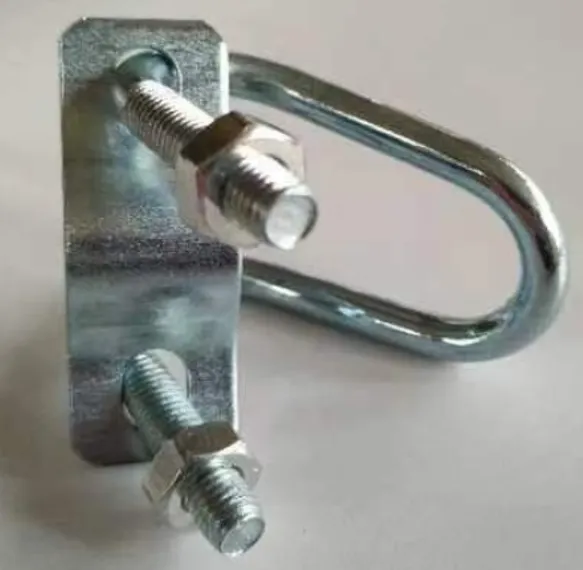loading...
- No. 9, Xingyuan South Street, Dongwaihuan Road, Zaoqiang County, Hengshui, Hebei, China
- admin@zjcomposites.com
- +86 15097380338
- Welcome to visit our website!
frp trench drain
Understanding FRP Trench Drains A Comprehensive Overview
In modern infrastructure and landscape design, effective water management is crucial for maintaining the integrity and aesthetics of various environments. One innovative solution that has gained significant traction in recent years is the use of Fiber Reinforced Polymer (FRP) trench drains. These systems are particularly valued for their strength, durability, and versatility, making them suitable for a range of applications from residential to industrial settings.
What is FRP?
Before diving into the specifics of FRP trench drains, it’s essential to understand what FRP is. Fiber Reinforced Polymer is a composite material made of a polymer matrix reinforced with fibers, which can be glass, carbon, or aramid. This combination provides high strength-to-weight ratios and exceptional resistance to corrosion, making FRP a preferred material in many engineering applications.
The Design and Structure of FRP Trench Drains
FRP trench drains are designed as linear drainage systems that effectively collect and redirect rainwater, runoff, and other liquids away from critical areas. Their structure typically consists of a trench box lined with a grated cover. The main channel is constructed from FRP, which is lightweight yet incredibly durable. This design allows for easy installation and maintenance while ensuring that the system can withstand various environmental factors, including extreme temperatures, heavy traffic loads, and chemical exposure.
One significant advantage of FRP trench drains is their customization capabilities. Manufacturers often offer a range of sizes, shapes, and grate options, allowing for tailored solutions that fit specific project requirements. Whether it is for a flat rooftop or a commercial parking lot, FRP trench drains can be designed to integrate seamlessly into the overall landscape.
Benefits of Using FRP Trench Drains
1. Corrosion Resistance One of the most significant advantages of FRP is its resistance to chemical and environmental corrosion. Unlike traditional metal drains, which can rust and degrade over time, FRP remains unaffected by most chemicals, saltwater, and harsh weather conditions.
2. Lightweight and Easy to Install The lightweight nature of FRP allows for simpler transportation and installation compared to heavier materials. This can significantly reduce labor costs and project timelines, making them an attractive option for contractors.
frp trench drain

3. Durability FRP trench drains are designed to endure heavy loads and impact, making them suitable for various applications, including residential driveways, commercial parking lots, and industrial facilities.
4. Aesthetic Versatility Available in multiple colors and designs, FRP trench drains can be integrated into any landscape without compromising visual appeal. Options for decorative grates further enhance the aesthetic value of the drainage system.
5. Low Maintenance Due to their inert nature, FRP trench drains require minimal maintenance. Regular cleaning and inspection are usually sufficient to keep the system functioning optimally, reducing long-term operational costs.
6. Sustainability Many manufacturers are increasingly focusing on sustainable practices in producing FRP products. Utilizing recyclable materials in the production process contributes to decreased environmental impact.
Applications of FRP Trench Drains
The versatility of FRP trench drains allows them to be employed in various environments. In residential areas, they can be used for effective stormwater management, preventing flooding and erosion around homes. In commercial settings, they serve to protect parking lots and loading docks from water accumulation, enhancing safety and accessibility.
In industrial contexts, FRP trench drains are invaluable for managing waste liquids and runoff—particularly in manufacturing and food processing facilities—where chemical resistance is paramount. Additionally, their lightweight design aids handling in construction sites, ensuring efficient workflow.
Conclusion
In summary, FRP trench drains represent a modern solution to an age-old problem effective water management. Their combination of durability, corrosion resistance, aesthetic versatility, and ease of installation makes them an ideal choice for various applications. As the demands for sustainable and efficient infrastructure continue to grow, the popularity of FRP trench drains is set to rise, proving them to be a vital component in the landscape of future construction projects. Whether for residential, commercial, or industrial use, FRP trench drains offer a reliable and innovative option for managing water effectively.
-
The Rise of FRP Profiles: Strong, Lightweight, and Built to LastNewsJul.14,2025
-
SMC Panel Tanks: A Modern Water Storage Solution for All EnvironmentsNewsJul.14,2025
-
GRP Grating: A Modern Solution for Safe and Durable Access SystemsNewsJul.14,2025
-
Galvanized Steel Water Tanks: Durable, Reliable, and Ready for UseNewsJul.14,2025
-
FRP Mini Mesh Grating: The Safer, Smarter Flooring SolutionNewsJul.14,2025
-
Exploring FRP Vessels: Durable Solutions for Modern Fluid HandlingNewsJul.14,2025
-
GRP Structures: The Future of Lightweight, High-Performance EngineeringNewsJun.20,2025
